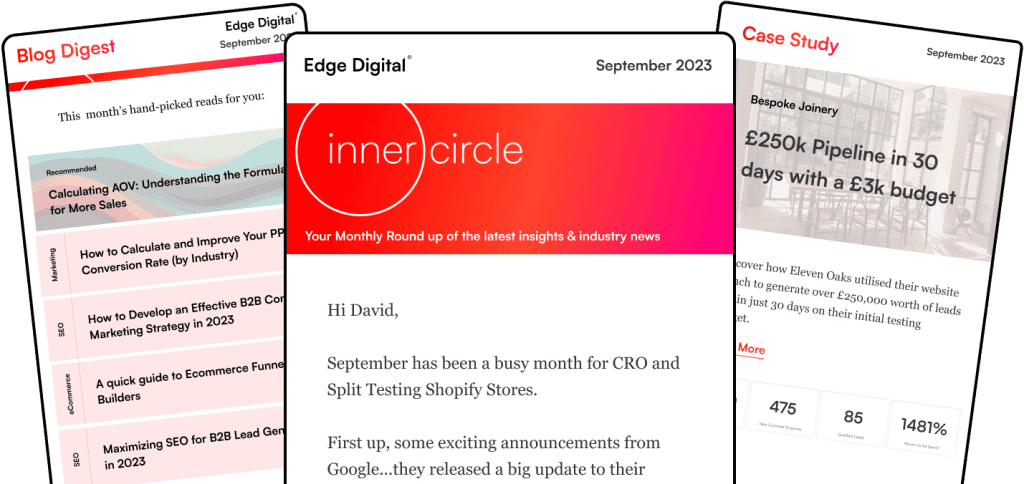Have you ever wondered why some marketing campaigns work better than others? Digital attribution modeling helps solve this mystery by showing which parts of your marketing efforts lead to sales.
It’s a way to understand how customers interact with your brand before making a purchase. Attribution modeling is the process of assigning credit to various marketing touchpoints that influence a customer’s decision to convert.

When customers buy something online, they rarely do it after seeing just one advert. They might see a social media post, then a Google ad, and finally click an email link before buying.
Attribution models are frameworks that help marketers understand which of these touchpoints deserve credit for the sale. Without proper attribution, you might waste money on channels that aren’t actually driving results.
Key Takeaways
- Attribution modeling helps businesses identify which marketing channels deliver the best return on investment by tracking customer journeys.
- There are multiple attribution models available, from simple last-click approaches to complex data-driven frameworks that use machine learning.
- Implementing effective attribution strategies can significantly improve marketing budget allocation and increase overall campaign performance.
Understanding Digital Attribution Modelling
Attribution modelling provides essential insights into how different marketing efforts contribute to conversions. These frameworks help marketers make data-driven decisions by mapping customer interactions across various touchpoints.
What Is Attribution Modelling?
Attribution modelling refers to the framework marketers use to determine which touchpoints or channels deserve credit for driving conversions. It’s essentially a method of analysing which marketing efforts are most effective at influencing customer decisions.
When customers interact with a brand through multiple channels before converting, attribution models help us understand the value of each interaction. These models range from simple approaches like last-click (giving all credit to the final touchpoint) to more sophisticated multi-touch models.
The goal of attribution modelling is to properly allocate marketing resources by identifying which channels provide the best return on investment. This helps us optimise spending and improve overall marketing effectiveness based on actual performance data rather than assumptions.
The Attribution Problem in Digital Marketing
The attribution problem arises because customers typically engage with multiple marketing channels before completing a conversion. How do we fairly distribute credit when someone sees a social media ad, clicks on a search result, and then converts after receiving an email?
Traditional single-touch models often oversimplify this complex journey. They might give all credit to either the first or last interaction, ignoring the role of intermediate touchpoints.
Digital marketing attribution models attempt to solve this problem by using different frameworks to assign credit:
- First-touch: Credits the first interaction
- Last-touch: Credits the final interaction before conversion
- Linear: Distributes credit equally across all touchpoints
- Time-decay: Gives more credit to interactions closer to conversion
- Position-based: Assigns most credit to first and last touchpoints
The challenge lies in selecting the model that best represents your specific customer journey and business goals.
Role in the Customer Journey
Attribution modelling plays a crucial role in understanding the complete customer journey. It helps us visualise how prospects move from awareness to consideration to decision-making, revealing important patterns.
By mapping touchpoints along this journey, we can identify which channels excel at specific stages. Some channels might be particularly effective at creating initial awareness, while others drive final conversions.
This journey-focused approach also reveals potential gaps or friction points where prospects drop off. We can then adjust our marketing strategy to address these weaknesses.
Effective attribution modelling also supports budget allocation decisions by showing which channels contribute most meaningfully to conversions. It helps unite marketing teams around shared metrics and creates a holistic view of marketing performance rather than siloed channel-specific reporting.
Core Attribution Models Explained
Attribution models help us understand which marketing touchpoints contribute to conversions. These frameworks assign credit in different ways, allowing marketers to measure campaign effectiveness based on various perspectives of the customer journey.
First-Click Attribution Model
The first-click attribution model gives 100% of the conversion credit to the very first interaction a customer has with your brand. This model is particularly valuable when you’re focused on discovering which channels are most effective at generating initial awareness.
First-click attribution helps us identify which marketing efforts are best at bringing new prospects into the sales funnel. It answers the critical question: “How do customers first discover us?”
Key benefits:
- Highlights top-performing acquisition channels
- Simplifies attribution calculations
- Perfect for awareness-focused campaigns
A limitation of this model is that it ignores all subsequent touchpoints in the customer journey. For complex purchases with long decision cycles, first-click attribution may overvalue early interactions whilst undervaluing those that actually convinced the customer to convert.
Last-Click Attribution Model
The last-click attribution model assigns full conversion credit to the final touchpoint before a purchase. This is one of the most common attribution models due to its straightforward implementation and clear connection to revenue.
Many businesses favour last-click attribution because it identifies which channels are closing sales. It’s particularly useful for evaluating bottom-of-funnel marketing activities that drive immediate conversions.
When to use last-click attribution:
- Tracking direct response campaigns
- Evaluating short sales cycles
- Optimising conversion-focused content
The primary drawback is that this model neglects all previous interactions that may have influenced the purchasing decision. It can lead to underinvestment in important top-of-funnel activities that initiate customer relationships.
Linear Attribution Model
The linear attribution model distributes credit equally across all touchpoints in the customer journey. Each interaction—from first discovery to final conversion—receives the same value, creating a more balanced view of marketing effectiveness.
We find linear attribution helpful when multiple channels work together to drive conversions. It acknowledges that customer journeys are rarely straightforward and that each interaction plays a role.
Linear attribution is ideal for:
- Understanding holistic marketing performance
- Evaluating complex, multi-channel campaigns
- Businesses with longer sales cycles
Unlike single-touch models, linear attribution prevents marketers from developing tunnel vision around specific channels. However, its equal weighting system doesn’t differentiate between highly influential touchpoints and minor interactions that may have had minimal impact on the final conversion.
Advanced Attribution Methods

Attribution modelling has evolved beyond basic frameworks to accommodate complex customer journeys. Advanced methods now offer deeper insights into how various touchpoints contribute to conversions across multiple interactions and timeframes.
Multi-Touch Attribution Models
Multi-touch attribution recognises that customers interact with multiple marketing channels before converting. Unlike simpler models, multi-touch attribution models distribute credit across several touchpoints in the buyer’s journey.
We typically see several approaches within this category:
- Linear attribution: Gives equal credit to all touchpoints
- U-shaped (position-based): Assigns 40% credit to first and last interactions, with 20% distributed among middle touchpoints
- W-shaped: Includes three key touchpoints (first, lead creation, conversion) with higher weighting
Multi-touch models provide a more balanced view of campaign effectiveness. They help us understand which combinations of channels work best together, rather than treating each channel in isolation.
When implementing these models, we recommend starting with a clear definition of what constitutes a touchpoint in your specific business context.
Time Decay Attribution
Time decay attribution gives more credit to touchpoints closer to conversion, acknowledging that recent interactions often have stronger influence on purchasing decisions.
The time decay model operates on a simple principle: touchpoints from yesterday matter more than those from last month. We apply a mathematical decay function where credit diminishes exponentially as you move further from conversion.
Key benefits include:
- Recognition of recency: Values recent customer interactions appropriately
- Campaign timing insights: Helps optimise when to deploy campaigns in the buying cycle
- Balance: More sophisticated than last-click while remaining intuitive
This model works particularly well for businesses with longer sales cycles where nurturing activities matter throughout the journey. We often pair time decay with algorithmic attribution to refine our understanding of which touchpoints drive conversions most effectively.
Implementing Attribution in Digital Marketing
Putting attribution models into practice requires proper technical setup and a clear understanding of how marketing channels connect with customer actions. This foundation ensures accurate tracking and meaningful insights for optimising campaigns.
Integration With Analytics Platforms
Most businesses begin their attribution journey by connecting their marketing activities with analytics platforms. Google Analytics remains the most widely used tool, offering basic attribution models right out of the box.
We recommend starting with Google Analytics 4, as it provides more advanced cross-channel tracking capabilities. To implement attribution effectively:
- Ensure proper tagging of all marketing campaigns with UTM parameters
- Set up conversion goals that align with business objectives
- Configure channel groupings to match your marketing strategy
More sophisticated organisations might employ dedicated attribution software like Attribution App or Ruler Analytics. These specialised platforms offer more nuanced attribution modeling frameworks and can better handle the complexity of multi-channel journeys.
Tracking Marketing Channels and Touchpoints
Accurate tracking of marketing touchpoints forms the backbone of effective attribution. We need to identify and monitor every interaction a prospect has with our brand.
Key touchpoints to track include:
- Search engine results (organic and paid)
- Social media engagements
- Email interactions
- Content downloads
- Website visits
- Webinar attendance
Cookie-based tracking traditionally supported this process, but privacy regulations have complicated matters. First-party data collection is now essential, requiring explicit consent mechanisms.
For e-commerce businesses, tracking should extend beyond the purchase to include post-purchase behaviours. This provides insights into long-term customer value, not just immediate conversions.
With proper AdWords click attribution, we can better understand how paid search influences the overall journey across multiple devices and sessions.
Practical Applications and Use Cases
Attribution modelling delivers tangible benefits across marketing strategies by connecting customer touchpoints to actual business outcomes. It transforms raw data into actionable insights that drive smarter budget allocation and campaign optimisation.
Ecommerce Attribution Strategy
Ecommerce businesses face unique challenges when tracking customer journeys across multiple channels. Attribution modelling helps identify which marketing efforts truly drive purchases rather than simply generating clicks.
We’ve found that implementing multi-touch attribution models allows online retailers to understand the complete customer path. For example, a customer might first discover a product through a social media ad, research it via organic search, and finally purchase after clicking an email promotion.
By attributing value across these touchpoints, ecommerce brands can:
- Allocate marketing budgets more effectively
- Identify high-performing channels for specific product categories
- Optimise the timing of promotional messages
- Improve customer retention strategies
This approach is particularly valuable for understanding how brand awareness campaigns contribute to eventual purchases, even when they don’t drive immediate conversions.
Measuring Campaign Effectiveness
Accurately measuring campaign effectiveness requires looking beyond last-click metrics. Attribution models provide the framework needed to evaluate each channel’s contribution.
We can use attribution data to compare different marketing initiatives:
| Campaign Type | Best Attribution Model | Key Metrics |
|---|---|---|
| Lead Generation | First-touch | Cost per acquisition, lead quality |
| Brand Awareness | Linear or position-based | Reach, engagement, recall |
| Direct Response | Last-touch or time-decay | Conversion rate, ROI |
By implementing the right attribution model, marketing teams gain clarity on which campaigns genuinely influence customer decisions. This enables better optimisation of ad spend across paid search, social media, email and other channels.
Advanced attribution also reveals how different campaigns work together. A display ad might not directly generate leads but could significantly boost the performance of subsequent email campaigns.
Challenges and Limitations of Attribution Models
Attribution models face significant hurdles that limit their effectiveness in today’s complex digital landscape. These models struggle with data management issues and tracking users across multiple devices, making accurate attribution a constant challenge.
Data Complexity and Big Data
The sheer volume of big data generated in modern marketing campaigns creates enormous complexity for attribution models. Many organisations become overwhelmed trying to process and analyse thousands of customer interactions across dozens of touchpoints.
Data quality issues compound these problems. Incomplete or incorrect data inputs can skew attribution results dramatically, leading to misguided marketing decisions.
When working with multiple data sources, inconsistent formatting and conflicting metrics further complicate analysis. Many marketing teams lack the technical expertise to properly integrate and normalise this data.
Real-time processing presents another challenge. By the time some attribution models deliver insights, the data may already be outdated for fast-moving campaigns.
Cross-Device Tracking Issues
Today’s consumers regularly switch between multiple devices during their buying journey, creating significant tracking restrictions for attribution models. A customer might see an ad on their mobile, research on a tablet, and complete a purchase on a laptop—all appearing as separate users in many attribution systems.
Privacy regulations like GDPR and the decline of third-party cookies have further limited our ability to track users across platforms. This creates blind spots in customer journeys, making it difficult to assign proper credit for conversions.
Cross-device tracking solutions exist but often provide only partial visibility. Many rely on login data or probabilistic matching that introduces significant margin for error.
This fragmented view can lead to:
- Undervaluing mobile touchpoints
- Misattributing conversion credit
- Creating duplicate customer profiles
Optimising Marketing Performance
Digital attribution modelling offers powerful insights that transform how we allocate resources and improve conversion rates. By tracking the customer journey across multiple touchpoints, we can identify the most effective channels and optimise our marketing spend.
Resource and Budget Allocation
Digital attribution modelling helps us make smarter decisions about where to invest our marketing budget. By understanding which channels drive the most valuable actions, we can redirect funds from underperforming areas to those with higher returns.
We can analyse the performance of each marketing channel through:
- Contribution to conversions: Which channels initiate or close sales
- Cost per acquisition: How much we spend to gain each customer
- Attribution weights: How much credit each touchpoint deserves
This approach prevents wasteful spending on ineffective channels. Instead of guessing, we can use marketing analytics tools to make data-driven decisions about budget allocation.
Our marketing teams can confidently adjust spending based on actual performance rather than assumptions. This leads to better ROI and more efficient resource distribution.
Improving Conversion Rates
Understanding the customer journey through attribution modelling directly impacts our ability to improve conversion rates. When we know which touchpoints influence purchasing decisions, we can enhance those specific interactions.
Attribution models provide organised rules for crediting different touchpoints throughout the customer journey. This helps us identify:
- High-performing content that moves customers forward
- Bottlenecks in the conversion funnel
- Optimal timing for marketing messages
We can use these insights to refine our messaging at critical decision points. For example, if social media ads frequently begin customer journeys that end in purchases, we might increase investment in that channel.
Bayesian network models can even help us predict which channels will drive future conversions. This allows us to proactively optimise our approach rather than simply reacting to past data.
Machine Learning and the Future of Attribution
Machine learning is transforming how marketers understand customer journeys through advanced attribution techniques. These data-driven approaches help us identify which touchpoints truly drive conversions and optimize marketing spend accordingly.
Algorithmic Models and Automation
Machine learning attribution models analyse vast amounts of data to determine how different marketing channels contribute to conversions. Unlike traditional models, these systems can adapt and learn from patterns over time.
We’ve observed that AI-powered attribution can predict the most effective touchpoints for future customer interactions. This predictive capability allows marketers to allocate budgets more efficiently.
Key benefits of ML-based attribution include:
- Real-time analysis of customer journeys
- Reduced human bias in channel valuation
- Automated adjustments to attribution weights
Bayesian network models represent one promising approach, giving us the ability to identify effective channels for future consumer engagement. These models consider the relationship between touchpoints rather than treating them as independent events.
As connected devices proliferate, data-driven attribution models will become increasingly important in our cross-channel marketing efforts.
Comparing and Selecting Attribution Models
Choosing the right attribution model directly impacts how marketing performance is measured and where resources are allocated. Different models offer varying perspectives on customer journeys, making thoughtful selection crucial for accurate campaign evaluation.
Model Comparison Tools
Several platforms offer robust tools for comparing different attribution models side by side. Google Analytics 4 provides an Attribution models report where we can select multiple models to compare their impact on conversion data.
This helps us visualise how credit distribution changes across different customer touchpoints. Google Ads also offers a comparison feature where we can view and compare different attribution models.
We can search for specific keywords or campaigns to see how different models value each interaction. Third-party analytics platforms like AgencyAnalytics provide deeper comparison capabilities for agencies managing multiple client campaigns.
These tools often include:
- Side-by-side ROI comparisons
- Visual conversion path analysis
- Custom model creation options
Selecting the Right Model for Your Strategy
The ideal attribution model aligns with our specific business goals and customer journey complexity. For short sales cycles with few touchpoints, simpler models like last-click might suffice.
For complex B2B purchases with longer decision phases, multi-touch models provide more balanced insight.
We should consider these factors when selecting a model:
- Sales cycle length: Longer cycles typically benefit from time-decay or data-driven models
- Marketing channel diversity: More channels usually require multi-touch attribution
- Available data volume: Data-driven models need substantial conversion data
- Reporting needs: Consider whether you need granular insights or high-level trends
It’s often valuable to test different models simultaneously to understand how attribution perspectives affect marketing decisions. This helps us identify which model most accurately reflects our customers’ actual path to purchase.
Frequently Asked Questions
Attribution modelling presents several complex challenges for digital marketers seeking to understand campaign performance accurately. We’ve compiled answers to common questions that address key aspects of implementation, model selection, and practical applications.
How do various attribution models impact digital marketing strategy?
Different attribution models significantly reshape marketing budgets and campaign priorities. First-touch models often direct more resources toward awareness channels like social media and display advertising, highlighting their role in customer discovery.
Last-click models typically favour search engine marketing and email, which appear at the end of the customer journey. This can lead to undervaluing top-of-funnel activities.
Multi-touch models like position-based attribution create more balanced strategies by acknowledging both discovery and conversion touchpoints. This comprehensive approach to attribution models enables more nuanced campaign optimisation.
What are the benefits and limitations of using machine learning in attribution modelling?
Machine learning brings powerful advantages to attribution by identifying patterns humans might miss. It can process vast datasets across channels and adapt to changing consumer behaviours without manual reconfiguration.
The technology excels at weighing touchpoint importance based on actual conversion patterns rather than predetermined rules. This creates more accurate credit distribution across campaigns.
Limitations include the “black box” problem, where marketers can’t easily understand why the model assigns specific values. Machine learning also requires substantial historical data and technical expertise to implement correctly.
In what ways does linear attribution differ from other models in assigning conversion credit?
Linear attribution stands apart by distributing conversion credit equally across all touchpoints. If six interactions led to a sale, each receives precisely 16.7% of the credit, regardless of timing or influence.
This contrasts sharply with position-based models that emphasise first and last touches, or time-decay models that give preference to recent interactions. Linear models avoid the bias of overvaluing certain touchpoints.
The equalised approach prevents marketers from overlooking potentially valuable middle-funnel interactions. However, it fails to recognise that some touchpoints genuinely contribute more to conversions than others.
Could you explain the process of setting up a digital attribution model using Google Tag Manager?
Setting up attribution in Google Tag Manager begins with creating a GA4 configuration tag that enables enhanced measurement. We must ensure all relevant events are properly tagged and firing correctly.
Next, we configure conversion events for key actions like purchases, sign-ups or downloads. This requires creating custom event tags with appropriate triggers and variables.
For advanced attribution, we implement cross-domain tracking if customers move between multiple websites during their journey. Finally, we verify data collection through real-time reports and debug mode before analysis begins.
What are the key components of an effective digital attribution modelling framework?
A robust attribution framework requires comprehensive data collection across all digital touchpoints. This includes website interactions, ads, emails, social media, and offline conversion points when possible.
The technology stack must integrate analytics platforms, CRM systems, and marketing automation tools to provide a unified view of customer journeys. Marketing attribution reports then translate this data into actionable insights.
Clear business objectives should guide the framework’s design, ensuring it answers specific questions about channel effectiveness and budget allocation. Regular validation against incrementality tests or controlled experiments helps confirm accuracy.
How does data-driven attribution (DDA) enhance performance marketing analysis?
Data-driven attribution elevates analysis by using algorithmic approaches rather than predefined rules. It examines conversion patterns across thousands of customer journeys to identify true influence factors.
DDA reveals which combinations of channels and messages drive conversions most effectively. This often exposes synergies between seemingly unrelated touchpoints that static models would miss.
The approach adapts automatically to changing market conditions and seasonal variations. When conversions reported in different systems don’t match, DDA helps reconcile these discrepancies by providing more accurate attribution across platforms.



